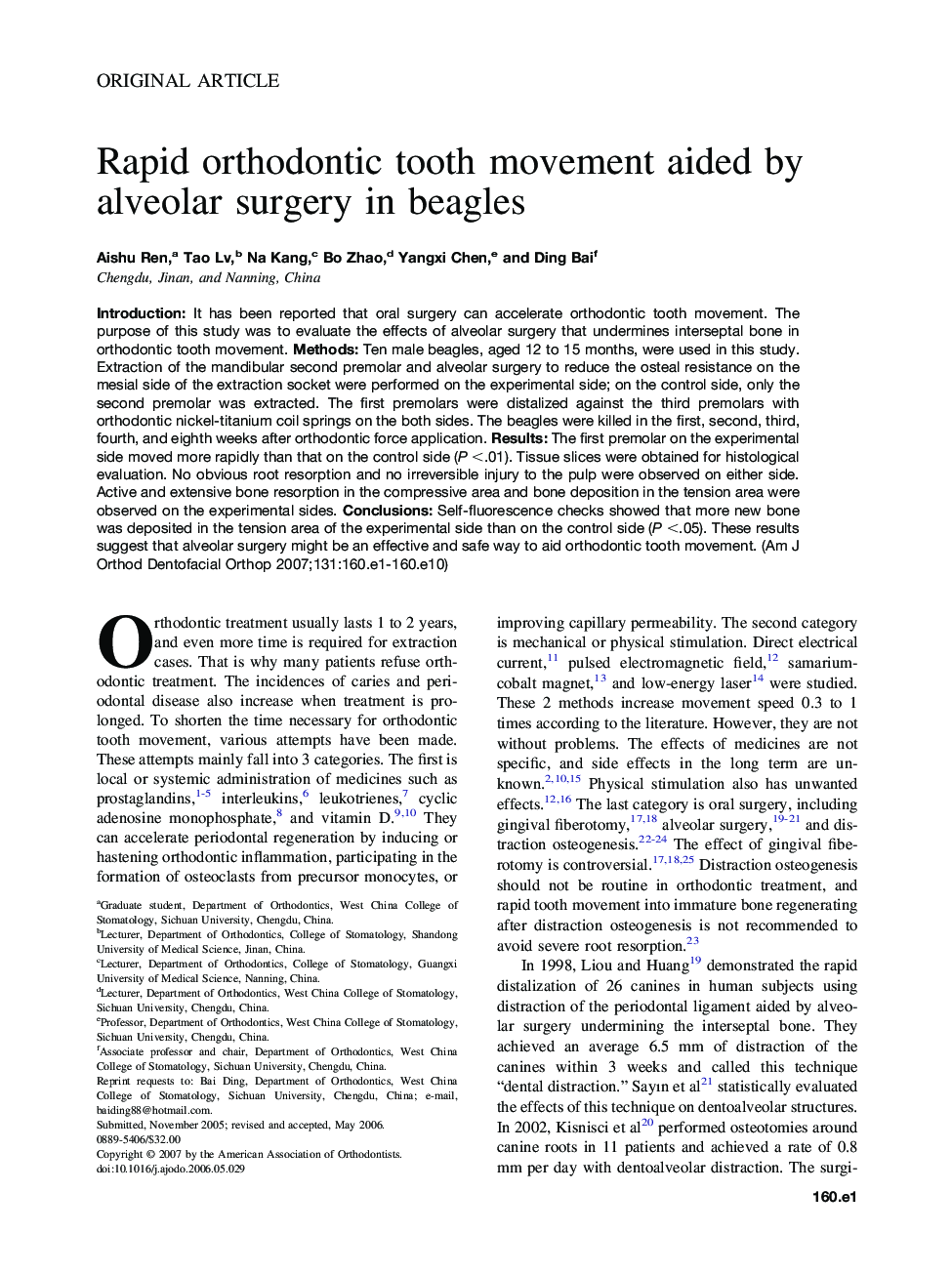| Article ID | Journal | Published Year | Pages | File Type |
|---|---|---|---|---|
| 3119292 | American Journal of Orthodontics and Dentofacial Orthopedics | 2007 | 10 Pages |
Abstract
Introduction: It has been reported that oral surgery can accelerate orthodontic tooth movement. The purpose of this study was to evaluate the effects of alveolar surgery that undermines interseptal bone in orthodontic tooth movement. Methods: Ten male beagles, aged 12 to 15 months, were used in this study. Extraction of the mandibular second premolar and alveolar surgery to reduce the osteal resistance on the mesial side of the extraction socket were performed on the experimental side; on the control side, only the second premolar was extracted. The first premolars were distalized against the third premolars with orthodontic nickel-titanium coil springs on the both sides. The beagles were killed in the first, second, third, fourth, and eighth weeks after orthodontic force application. Results: The first premolar on the experimental side moved more rapidly than that on the control side (P <.01). Tissue slices were obtained for histological evaluation. No obvious root resorption and no irreversible injury to the pulp were observed on either side. Active and extensive bone resorption in the compressive area and bone deposition in the tension area were observed on the experimental sides. Conclusions: Self-fluorescence checks showed that more new bone was deposited in the tension area of the experimental side than on the control side (P <.05). These results suggest that alveolar surgery might be an effective and safe way to aid orthodontic tooth movement.
Related Topics
Health Sciences
Medicine and Dentistry
Dentistry, Oral Surgery and Medicine
Authors
Aishu Ren, Tao Lv, Na Kang, Bo Zhao, Yangxi Chen, Ding Bai,
